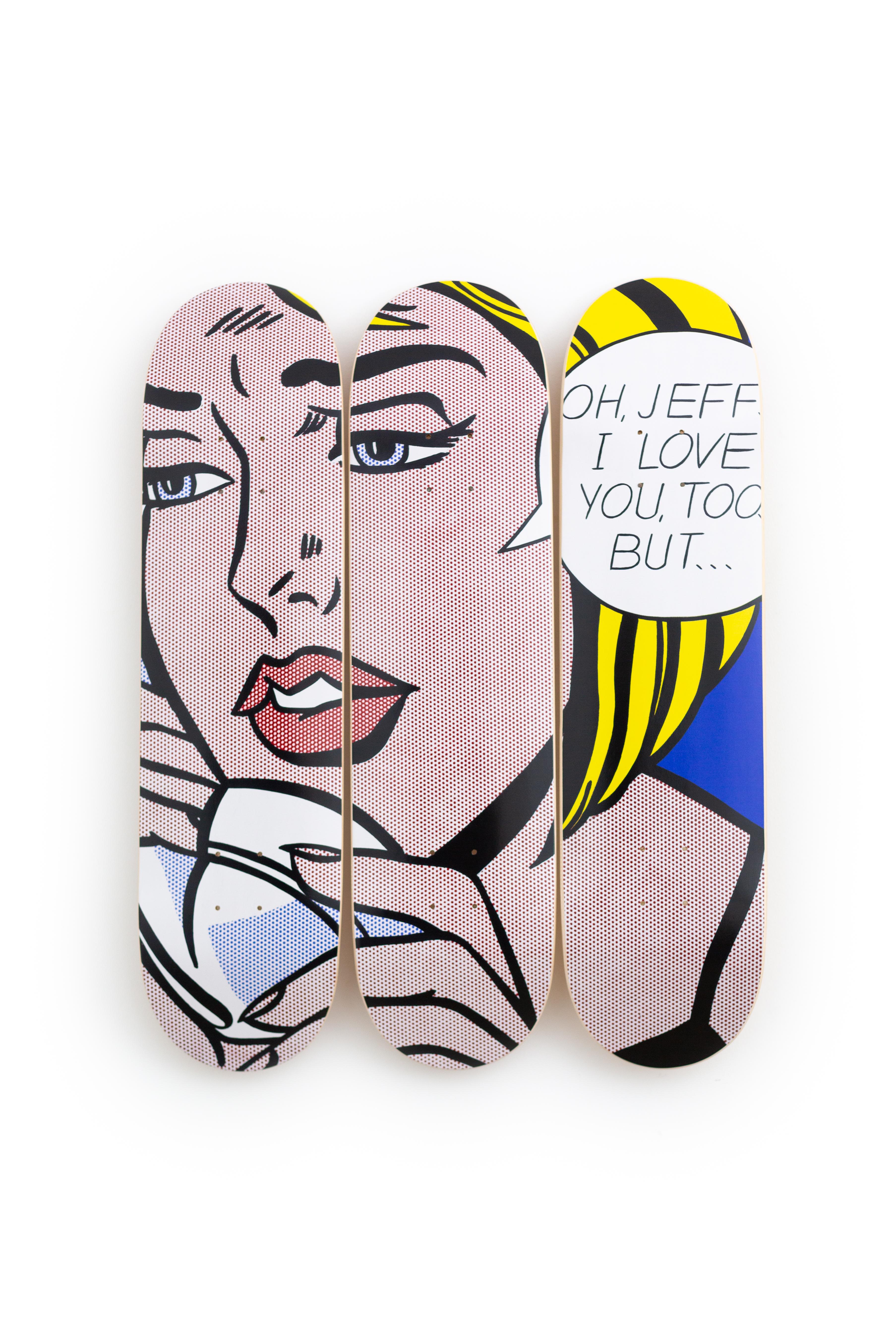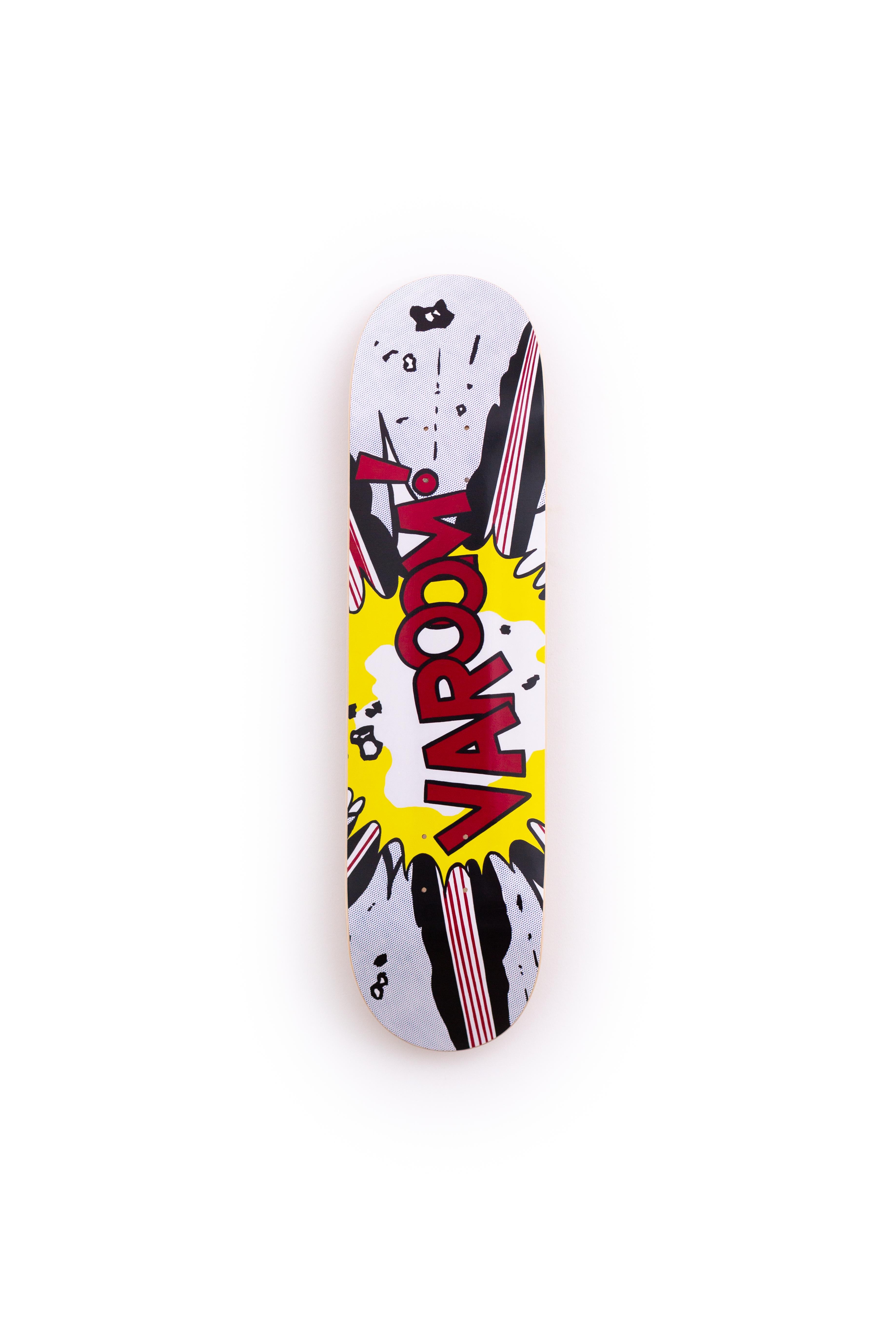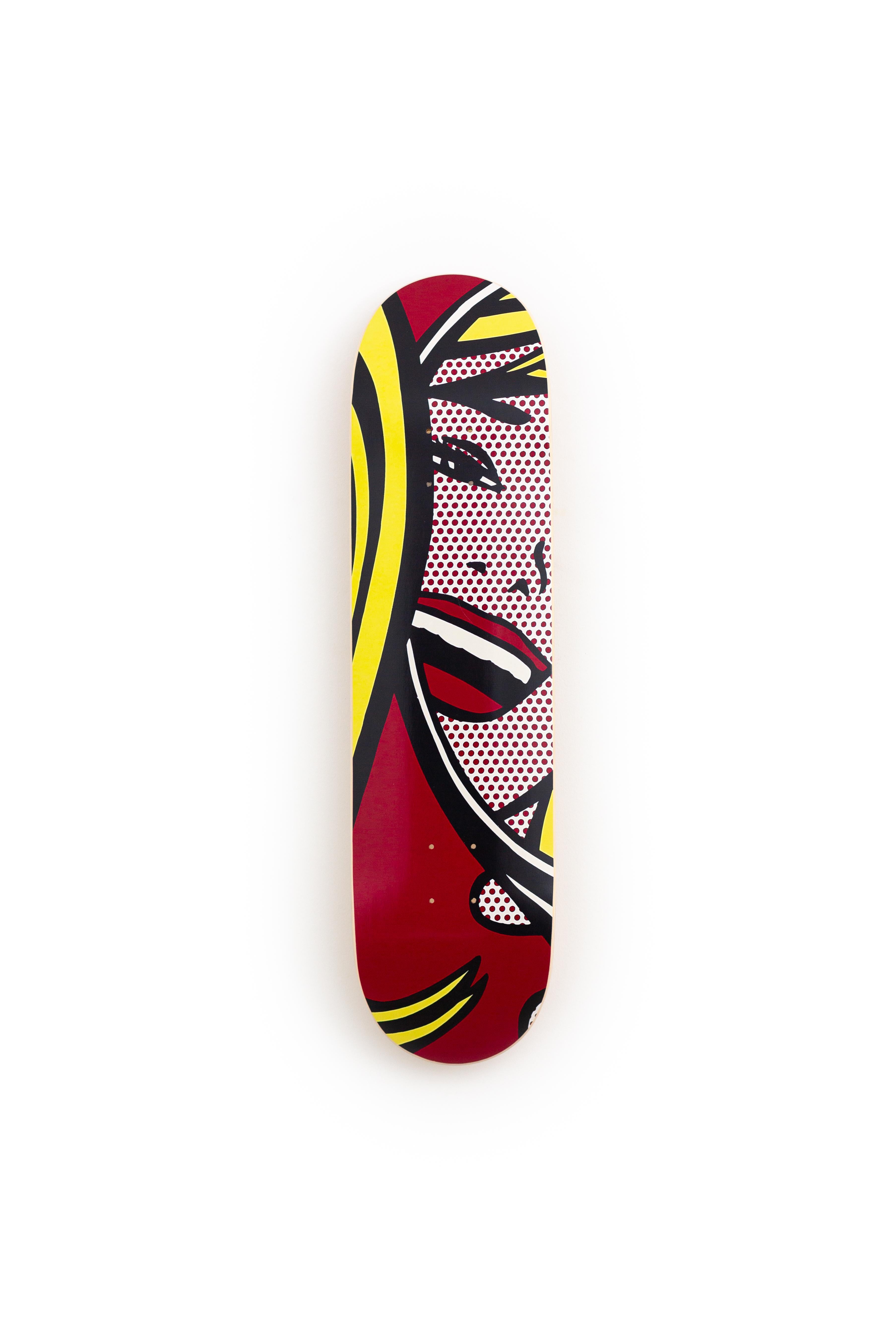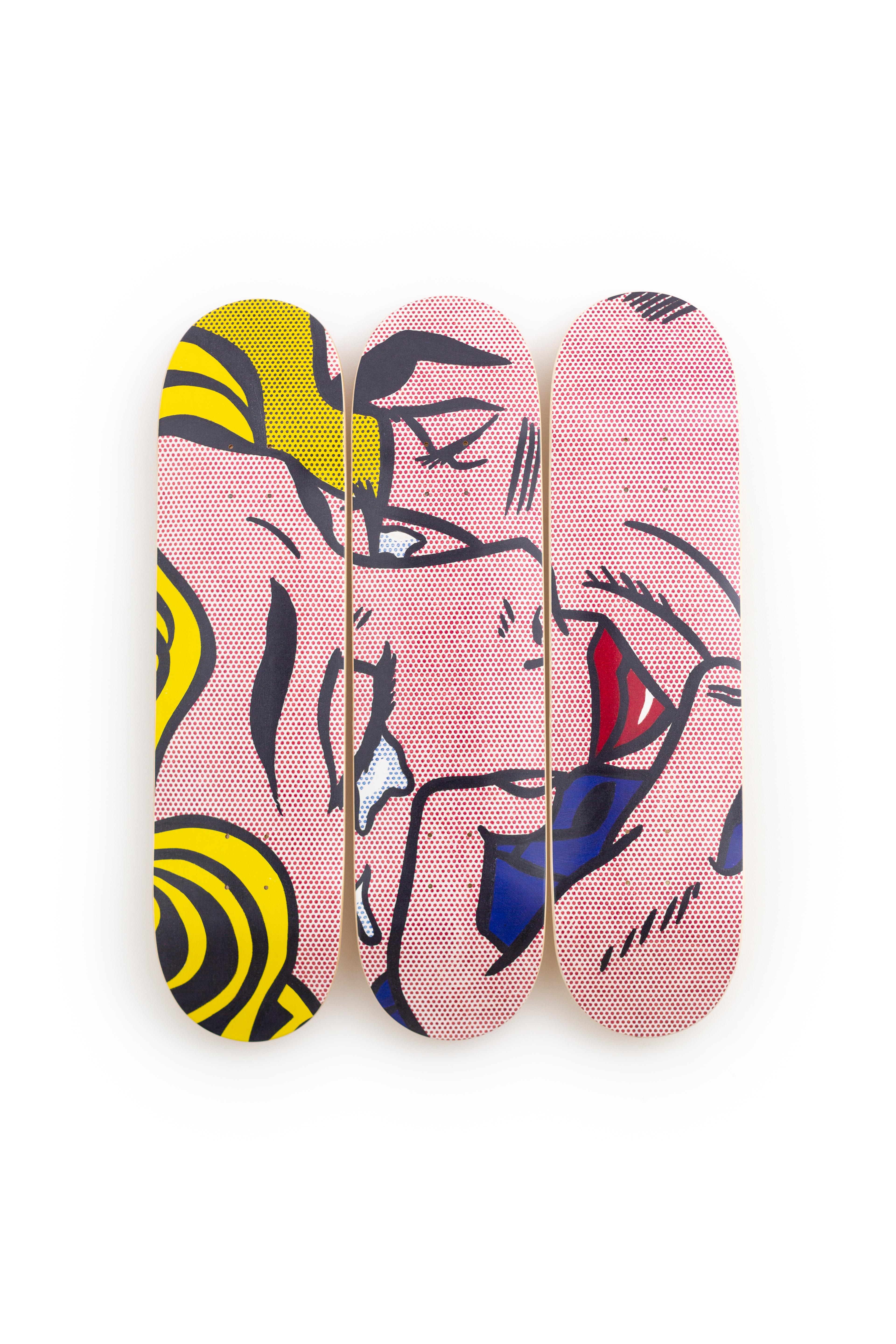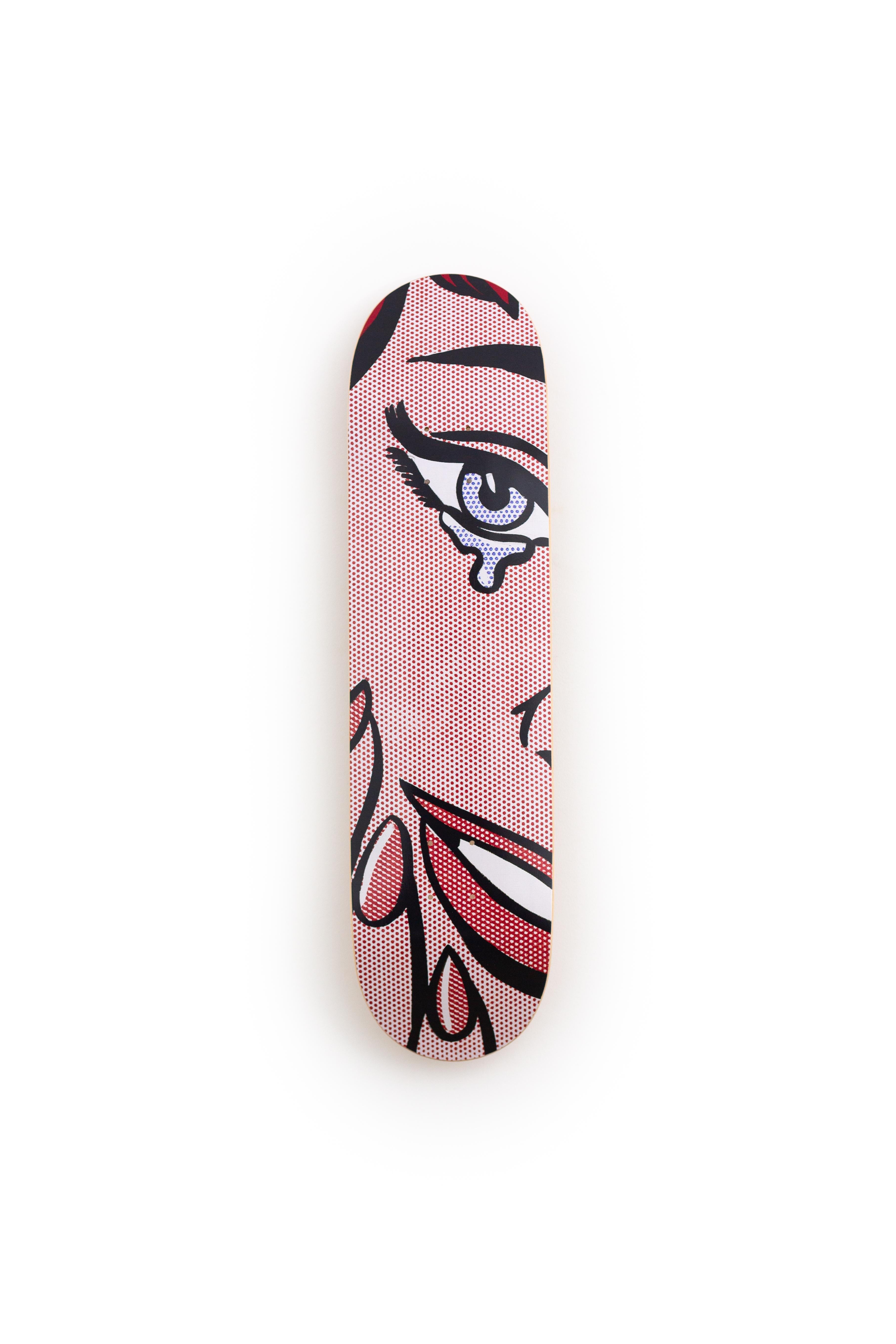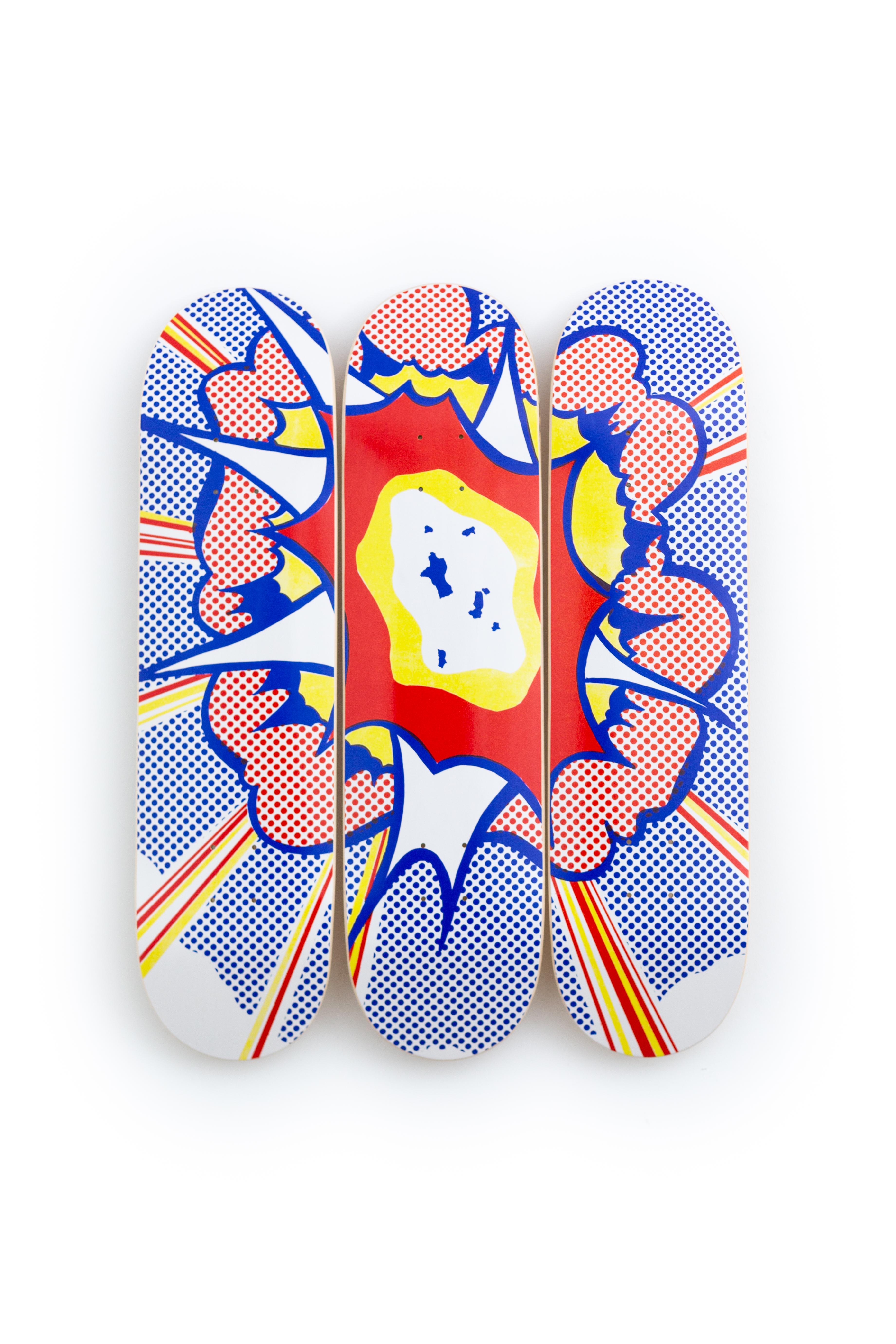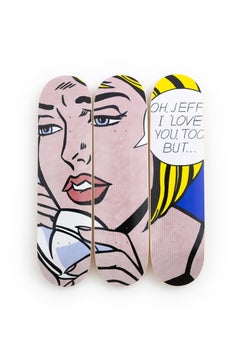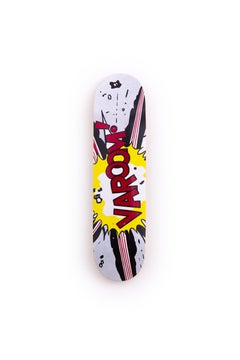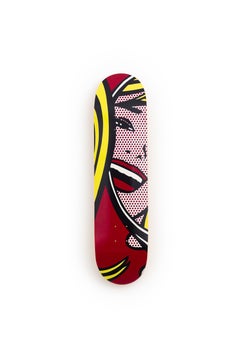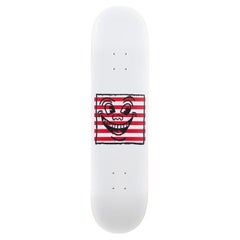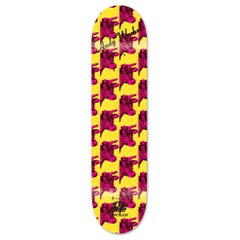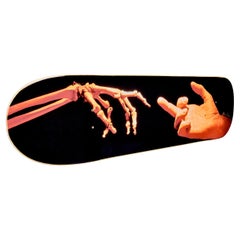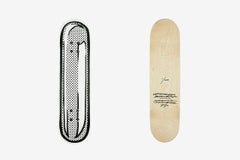Items Similar to after ROY LICHTENSTEIN - Finger Pointing Skate Deck Pop Art Design
Want more images or videos?
Request additional images or videos from the seller
1 of 4
after ROY LICHTENSTEIN - Finger Pointing Skate Deck Pop Art Design2024
2024
$414.16
£312.40
€350
CA$581.14
A$633.72
CHF 332.91
MX$7,595.52
NOK 4,221.63
SEK 3,928.62
DKK 2,666.40
About the Item
Roy Lichtenstein - Finger Pointing
Date of creation: 2024
Medium: Digital print on Canadian maple wood
Edition: Open
Size: 80 x 20 cm
Condition: In mint conditions and never displayed
Skate deck made of 7 ply grade A Canadian maple wood.
© Estate of Roy Lichtenstein, 2024, all rights reserved
Finger Pointing (1965) is a work that takes Lichtenstein's signature technique, with its Ben-Day dots and comic style, to a deeper level of reflection on power and authority. In this painting, the finger pointing does not simply point at a distant object or figure, but directly at the viewer, creating an immediate confrontational relationship. This aggressive and accusatory gesture is not a mere “pointing”; the finger becomes a direct accusation, a challenge that involves the audience in the act of being singled out.
The finger pointing at the viewer can be interpreted as a critique of social control and the power dynamics at play. In a society that constantly categorizes, judges, and points out what is right or wrong, Lichtenstein transforms this gesture into a symbol of accusation that is hard to ignore. The viewer cannot escape the finger's gaze, which evokes the feeling of being watched, judged, or even blamed. This confrontation creates tension in the work, inviting the viewer to reflect on their own position in society and their relationship with power systems.
Through the simplicity of the comic, Lichtenstein addresses broader social issues, especially in the context of the 1960s, a period marked by civil rights movements and growing political awareness in the United States. The pointing finger symbolizes not only authority or institutional power but also the moral and social judgment placed on those who are seen as "others" or outside the established norms. The fact that the finger points at the viewer can also be seen as a reference to media manipulation, where the media and figures of authority "point out" what should be seen and understood, creating an imposed reality.
Lichtenstein uses the comic, a medium so widely consumed and accessible, to question how images and symbols of power have become integrated into popular culture. Through this approach, Finger Pointing becomes not only a work that plays with the aesthetics of the comic but also a critical reflection on how modern society creates and maintains hierarchies of power. The work, with its mix of irony and seriousness, forces the viewer to confront the omnipresence of controlling gestures and social structures that often go unnoticed but continue to have a profound influence on our daily lives.
ABOUT THE ARTIST
Roy Lichtenstein was born on October 27, 1923, in New York City, into a wealthy Jewish family. His father, Milton Lichtenstein, was a successful real estate broker, and his mother, Beatrice, was a homemaker with an interest in art. This comfortable environment, rich in cultural stimuli, allowed Roy to develop an early interest in drawing, jazz, and science fiction—interests that would permeate much of his later work.
He attended the Franklin School for Boys in Manhattan and later the Ohio State University, where he studied fine arts. His studies were interrupted by World War II, during which he served in the U.S. Army. Upon returning, he resumed his education and began teaching at various institutions, including Rutgers University, where he met Allan Kaprow, one of the precursors of performance art. This meeting helped shape Lichtenstein's thoughts on the boundaries of art.
In the early 1960s, Lichtenstein took a dramatic turn in his artistic direction. Tired of the dominance of Abstract Expressionism, which he saw as overly serious and emotionally saturated, he began experimenting with comic book imagery. His 1961 piece Look Mickey marked a watershed moment: it featured a recognizable cartoon image rendered with hand-painted Ben-Day dots, a technique used in commercial printing to create shading and color variation.
From this point on, Lichtenstein developed an unmistakable style characterized by bold outlines, flat colors, and the use of dots to mimic the appearance of printed comics. His work was both a celebration and a critique of mass media and consumer culture. Paintings like Whaam! (1963) and Drowning Girl (1963) are now icons of the Pop Art movement, juxtaposing melodrama with mechanical precision.
One of Lichtenstein's greatest contributions was his ability to transform banal, everyday imagery into works of high art, forcing viewers to confront the line between commercial and fine art. His work was not without controversy; critics accused him of plagiarizing comic artists, but Lichtenstein always defended his reinterpretations as transformative and conceptual.
Over the following decades, Lichtenstein expanded his scope, venturing into sculptures, murals, and reinterpretations of works by other artists, such as Picasso, Monet, and van Gogh. His Brushstrokes series (1965-1966) cleverly mimicked the gestural marks of Abstract Expressionism but rendered them in his mechanical style, parodying the very movement that once dominated the art world.
In the 1980s and 90s, Lichtenstein continued to innovate, creating large-scale public artworks and exploring themes like art deco, surrealism, and the history of painting itself. He also created pieces that commented on the artifice of perspective and the illusionism of space, always through his characteristic lens of irony and detachment.
Roy Lichtenstein passed away in 1997, but his legacy remains profound. His works are part of major collections around the world, from MoMA in New York to the Tate Modern in London. His influence can be seen in advertising, graphic design, and even digital culture, cementing him as one of the most important artists of the 20th century.
Through humor, clarity, and a touch of provocation, Lichtenstein redefined what art could be. He transformed the mundane into the monumental and taught generations to see the extraordinary within the ordinary.
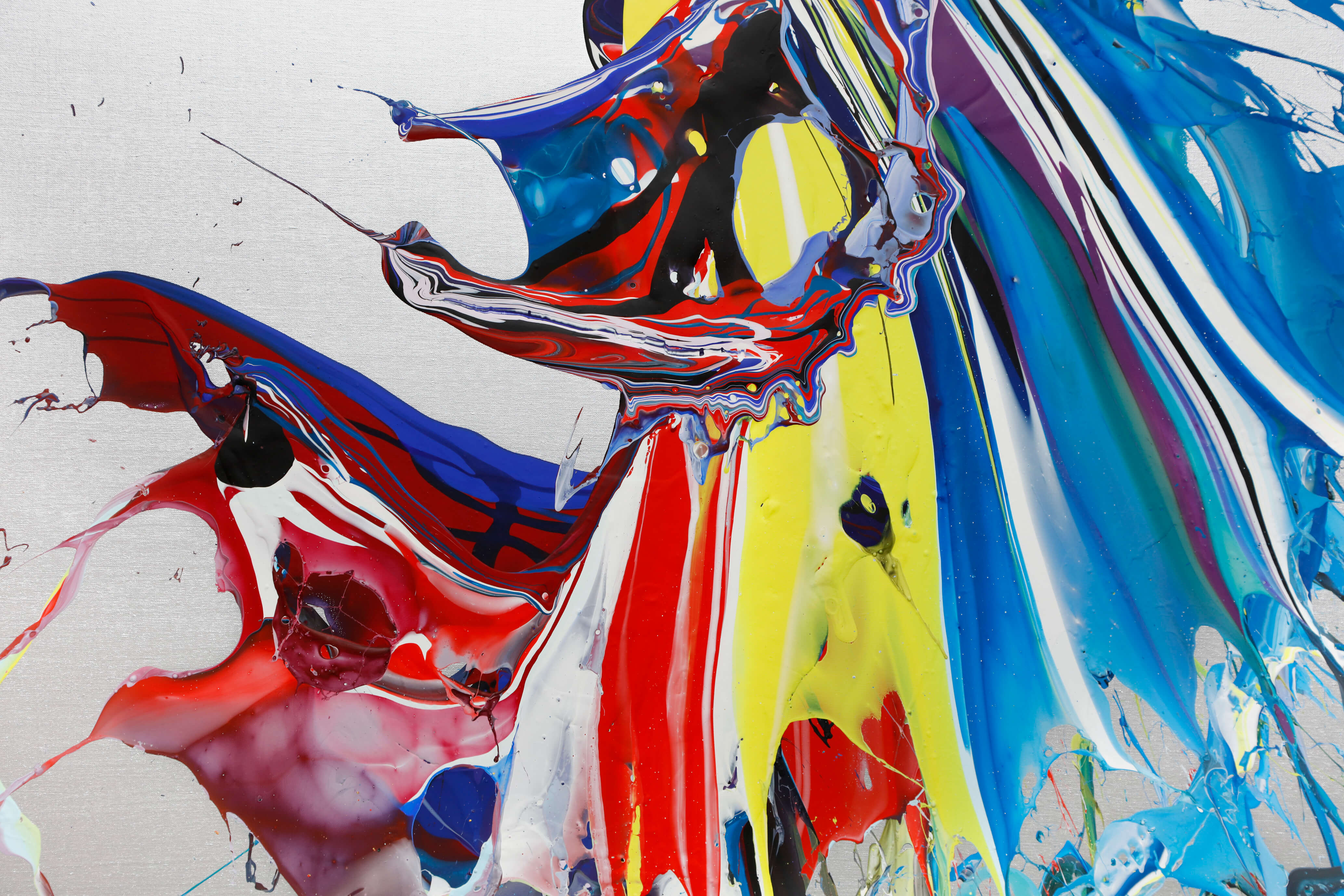
About the Seller
5.0
Vetted Professional Seller
Every seller passes strict standards for authenticity and reliability
Established in 2011
1stDibs seller since 2018
183 sales on 1stDibs
Typical response time: 6 hours
- ShippingRetrieving quote...Shipping from: Madrid, Spain
- Return Policy
More From This Seller
View AllROY LICHTENSTEIN - OH, JEFF... I LOVE YOU, TOO... BUT Skate Decks Pop Art Design
By Roy Lichtenstein
Located in Madrid, Madrid
Roy Lichtenstein - OH, JEFF... I LOVE YOU, TOO... BUT...
Date of creation: 2024
Medium: Digital print on Canadian maple wood
Edition: Open
Size: 80 x 20 cm (each skate)
Condition: I...
Category
2010s Pop Art More Art
Materials
Wood, Digital
after ROY LICHTENSTEIN - Varoom!, 1963. Skate Deck Pop Art Design
By Roy Lichtenstein
Located in Madrid, Madrid
Roy Lichtenstein - Varoom!, 1963
Date of creation: 2024
Medium: Digital print on Canadian maple wood
Edition: Open
Size: 80 x 20 cm
Condition: In mint conditions and never displayed...
Category
2010s Pop Art More Art
Materials
Wood, Digital
after ROY LICHTENSTEIN - Girl in Mirror, c. 1964. Skate Deck Pop Art Design
By Roy Lichtenstein
Located in Madrid, Madrid
Roy Lichtenstein - Girl in Mirror, c. 1964
Date of creation: 2024
Medium: Digital print on Canadian maple wood
Edition: Open
Size: 80 x 20 cm
Condition: In mint conditions and never...
Category
2010s Pop Art More Art
Materials
Wood, Digital
ROY LICHTENSTEIN - KISS V Skate Decks Pop Art Design Modern
By Roy Lichtenstein
Located in Madrid, Madrid
Roy Lichtenstein - Kiss V
Date of creation: 2024
Medium: Digital print on Canadian maple wood
Edition: Open
Size: 80 x 20 cm (each skate)
Condition: In mint conditions and never dis...
Category
2010s Pop Art More Art
Materials
Wood, Digital
after ROY LICHTENSTEIN - Happy Tears, 1964. Skate Deck Pop Art Design
By Roy Lichtenstein
Located in Madrid, Madrid
Roy Lichtenstein - Happy Tears, 1964
Date of creation: 2024
Medium: Digital print on Canadian maple wood
Edition: Open
Size: 80 x 20 cm
Condition: In mint conditions and never displ...
Category
2010s Pop Art More Art
Materials
Wood, Digital
ROY LICHTENSTEIN - EXPLOSION, 1967. Skate Decks Pop Art Design Modern
By Roy Lichtenstein
Located in Madrid, Madrid
Roy Lichtenstein - Explosion, 1967
Date of creation: 2024
Medium: Digital print on Canadian maple wood
Edition: Open
Size: 80 x 20 cm (each skate)
Condition: In mint conditions and ...
Category
2010s Pop Art More Art
Materials
Wood, Digital
You May Also Like
Untitled 'Smile on Stripes' Skateboard Deck by Keith Haring
Located in Jersey City, NJ
The Skateroom w/ ©Keith Haring Foundation
Set of 3 skateboard decks
7-Ply Canadian Maplewood with screen-print
Measures: 31 H x 8 inches, each
Mounting hardware included
Open ed...
Category
2010s Belgian Wall-mounted Sculptures
Materials
Maple
Andy Warhol Cow Skate Deck 2010
By (after) Andy Warhol
Located in NEW YORK, NY
Vintage Andy Warhol Cow Skateboard Deck:
This work originated circa 2010 as a result of the collaboration between Alien Workshop and the Andy Warhol Foundation. A brilliant piece of...
Category
1960s Pop Art More Art
Materials
Offset, Wood
Skateboard Deck by Original in Berlin with Iconic Ed Colver Image
By Original in Berlin
Located in Berlin, DE
This limited edition skateboard deck by “Original in Berlin” features a striking and provocative photograph by legendary punk photographer Edward Colver. The image was originally cre...
Category
2010s American Sports Equipment and Memorabilia
Materials
Plywood
Unfinished Business SkateDeck
Located in Draper, UT
Joshua Vides, Unfinished Business Skate Deck in original packaging.
Category
2010s Street Art Mixed Media
Materials
Wood
Jean-Michel Basquiat skateboard decks 2020 (Basquiat Angel)
By Jean-Michel Basquiat
Located in NEW YORK, NY
Jean-Michel Basquiat skateboard deck set:
Basquiat skateboard decks licensed by the Estate of Jean Michel Basquiat in conjunction with Artestar circa 2020, featuring offset imagery o...
Category
2010s Pop Art More Art
Materials
Wood, Offset
Keith Haring Skateboard deck 2012 (Keith Haring skate deck)
By (after) Keith Haring
Located in NEW YORK, NY
Rare Out of Print Keith Haring Skateboard Deck featuring the artist's iconic Boom Box men.
This highly decorative Keith Haring skate deck originated circa 2012 as a result of the co...
Category
21st Century and Contemporary Pop Art Figurative Prints
Materials
Wood, Screen
$460 Sale Price
20% Off
